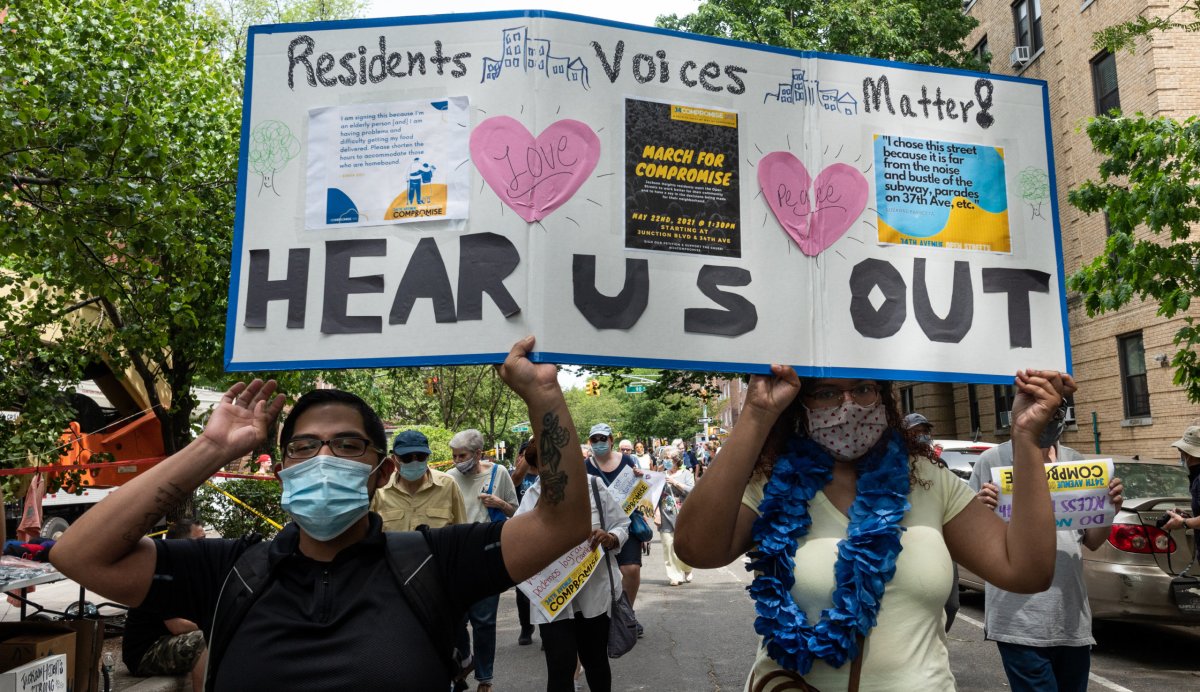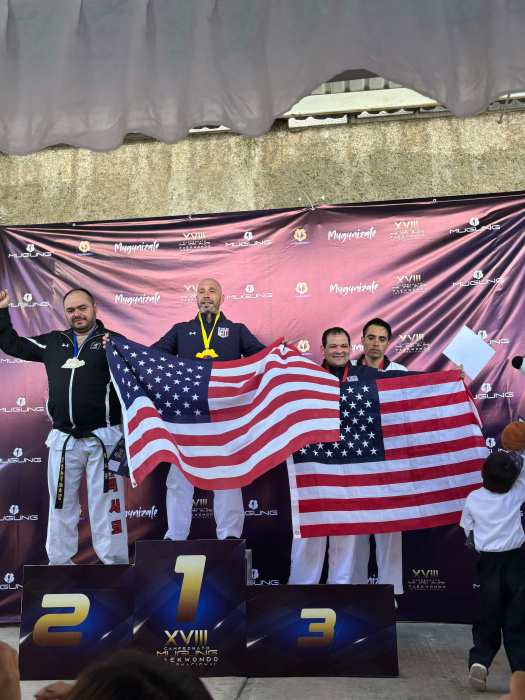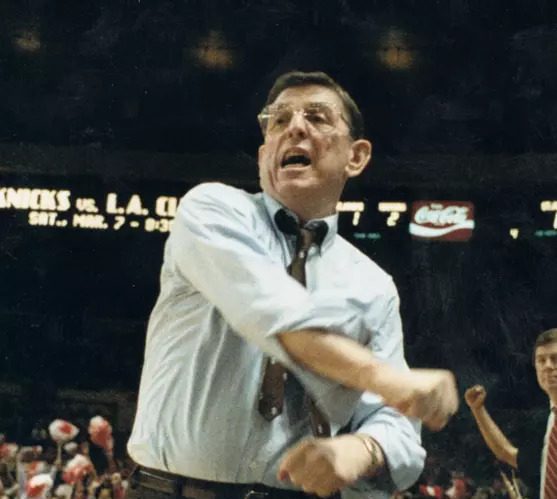A group of Jackson Heights residents of the 34th Avenue Open Streets Compromise gave a voice to some of the avenue’s residents against the program as it stands, marching down the popular open street from Junction Boulevard to 69th Street on Saturday, May 22.
They called on city officials to meet them halfway on the Open Streets initiative that the City Council inked as permanent at the beginning of May. The group agrees that the initiative served a purpose during the height of the COVID-19 pandemic, allowing New Yorkers to enjoy the outdoors while safely maintaining a social distance.
But they also said that while 34th Avenue, which is closed off to traffic 12 hours a day, has peak hours of high activity, the avenue isn’t used much for outdoor recreation most of the time. The group believes that with the availability of sidewalks and bike lanes, it doesn’t make sense to block off a two-sided avenue.
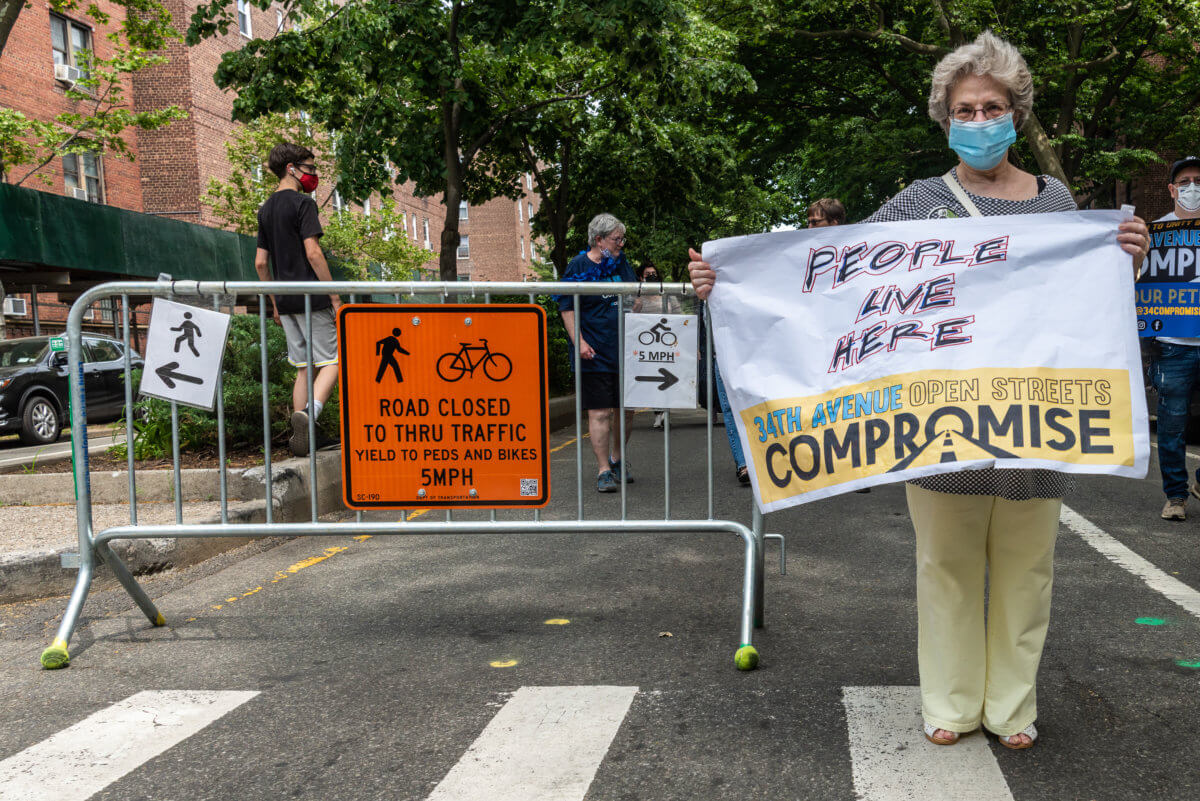
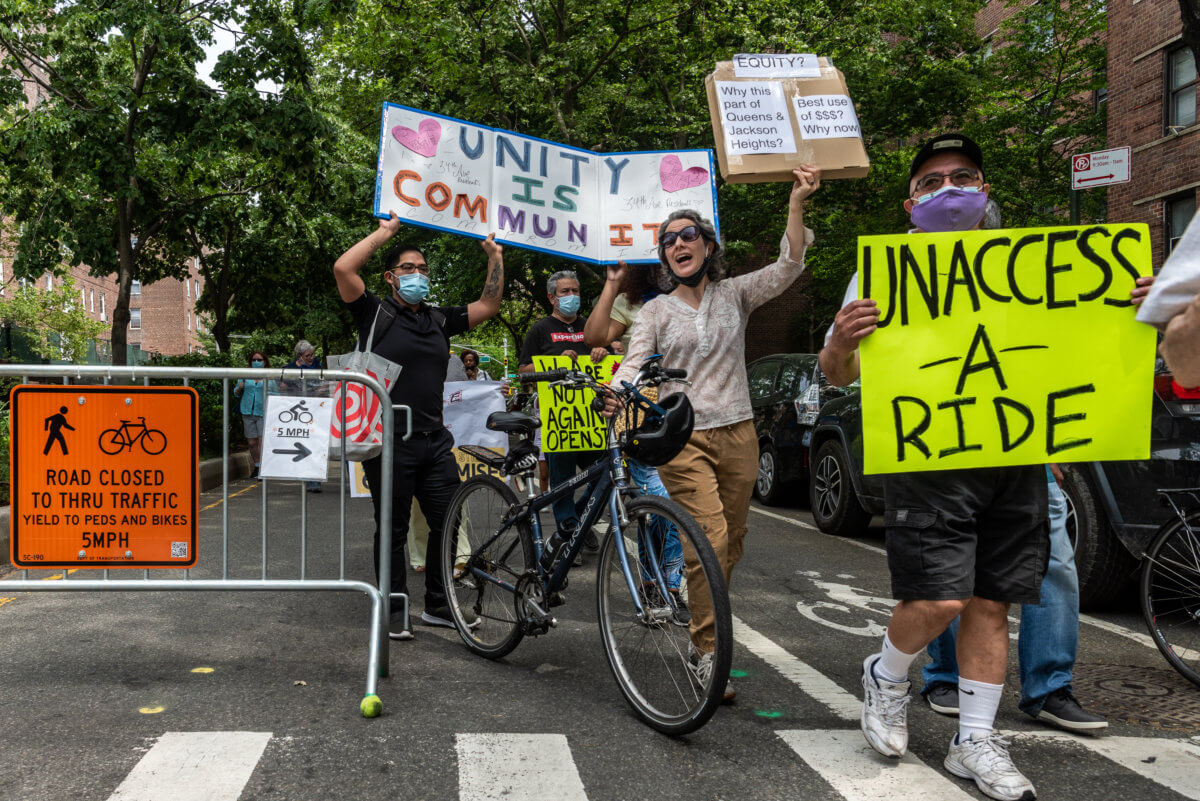
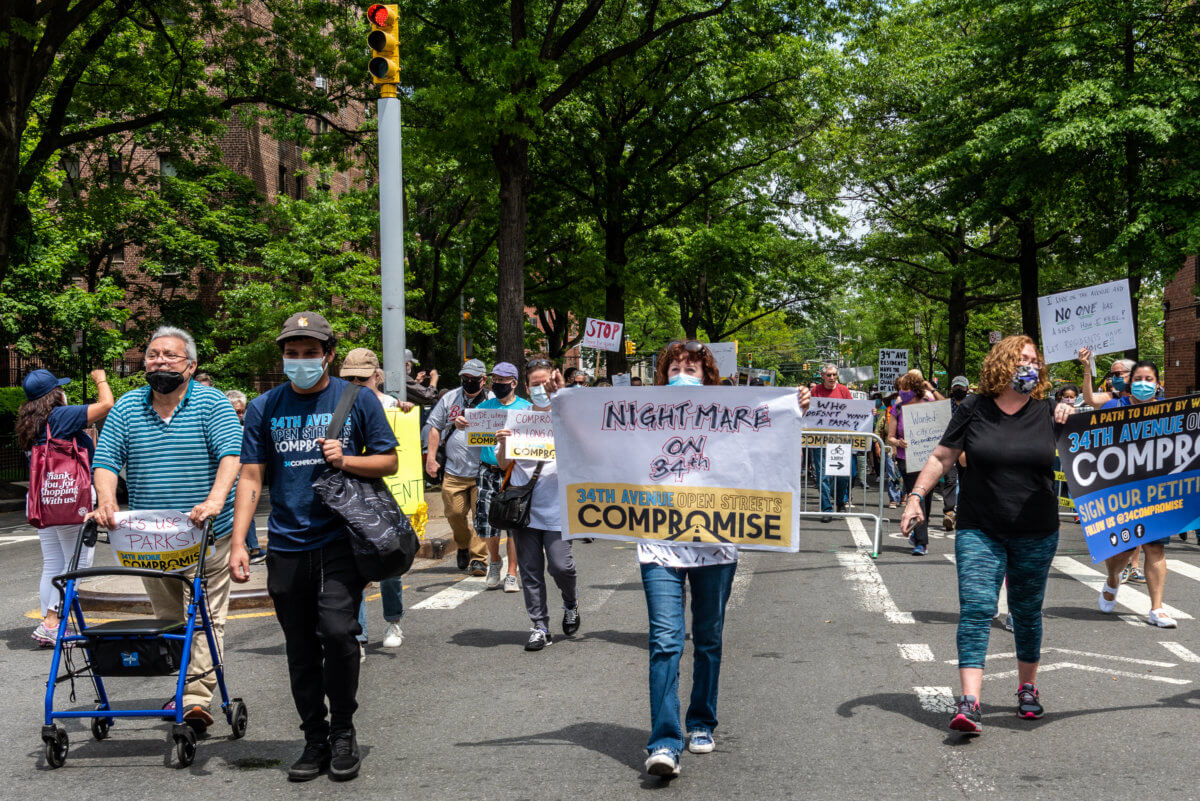
They said it’s added to the traffic pressure on Northern Boulevard and 35th Avenue, an argument some Jackson Heights residents have brought up many times before during community meetings. The Department of Transportation (DOT) has previously said they will study how and if it the Open Street has affected the traffic Northern Boulevard and surrounding corridors.
The group is also asking to shorten the length of 34th Avenue’s Open Street, which currently spans 26 blocks along the avenue, and demand the DOT conduct another survey to find out how the Open Street initiative truly affects the residents of the avenue.
DOT conducted a survey in December and January that had more than 2,000 participants (93 percent of them from Jackson Heights and nearby), and found 45 percent said they use the avenue daily.
Kathy Farrem, a 40-year-old Jackson Heights resident, made it clear that they are not against Open Streets. However, she feels that the concerns of many of the residents weren’t taken into account when the City Council voted to make the Open Streets initiative a permanent fixture of city life at the beginning of May.
She said that many in the community are seniors without access to computers and don’t know how to use modern technology, therefore, they didn’t know about the online meetings and couldn’t raise their concerns.
“We have almost a thousand people that have signed up,” Farrem said about their group. “So, there are at least a thousand people in this neighborhood that are not happy and haven’t really been heard.”
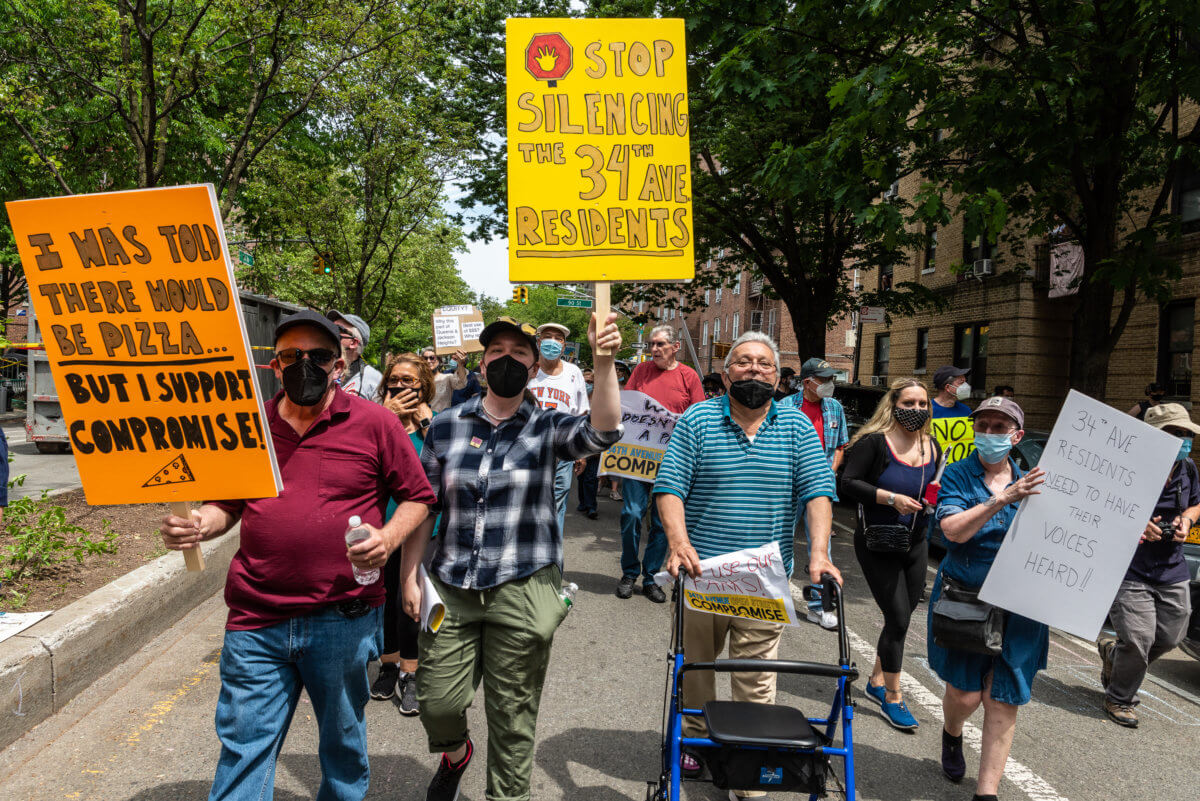
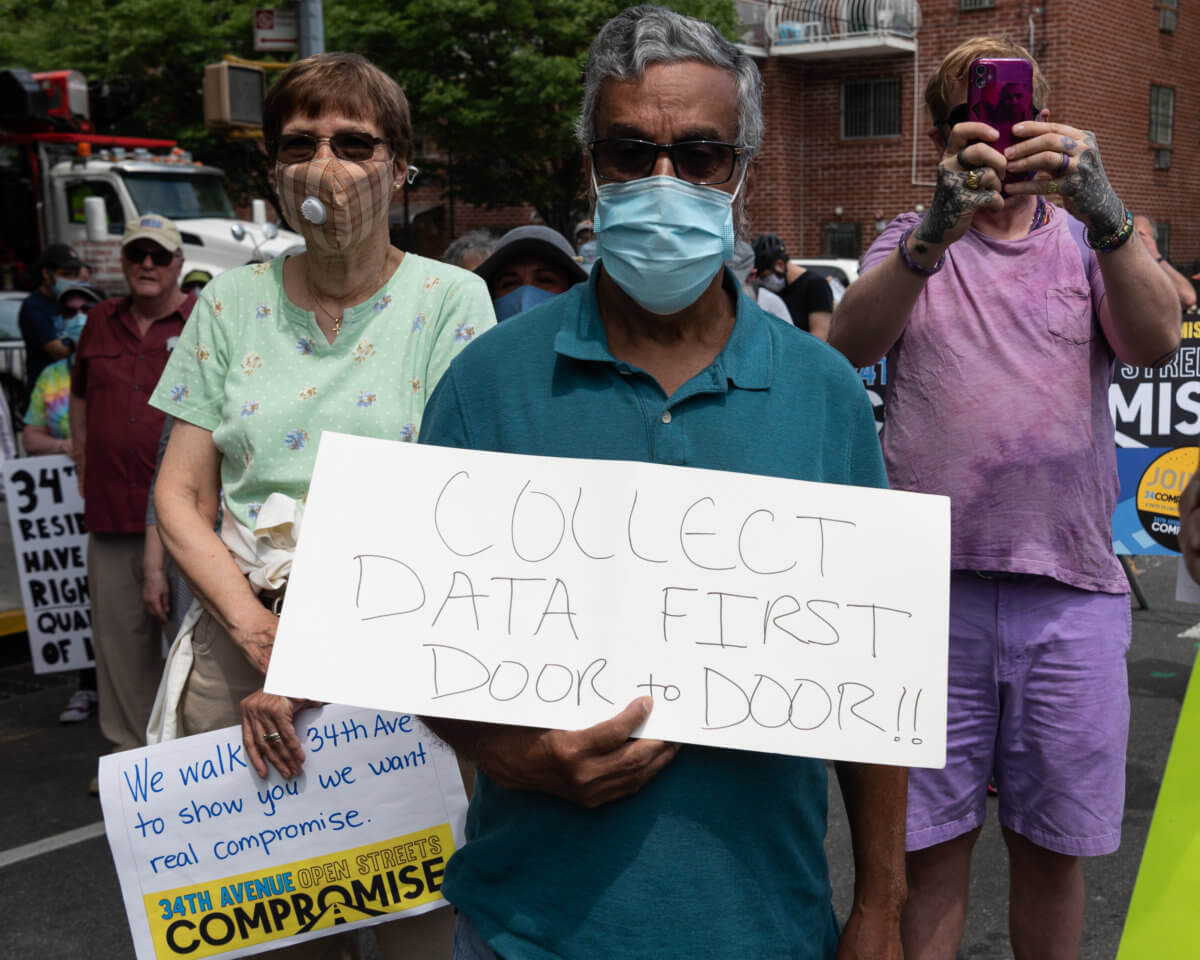
Farrem said they want a compromise, and want the hours in particular to be “adjusted.”
Farrem also pointed out that moving the barriers was especially challenging for elderly drivers and said that Access-A-Ride won’t drive up to her neighbor’s front door anymore and that she has to walk to the corner to catch her ride.
Carlos Cortes, the president of Southridge Cooperative Section IV, a cooperative apartment complex in Jackson Heights with close to 4,000 residents, said that none of the residents were consulted before the City Council made the Open Streets initiative permanent.
He also took issue with Assembly member Jessica González-Rojas and her support of turning 34th Avenue into a linear park, spearheaded by 34th Avenue Linear Park. The idea has also received the support of Queens Borough President Donovan Richards.
But Cortes called it an “audacity” that González-Rojas, who he said “finally” met with representatives of 34th Avenue Compromise on Friday, never bothered consulting the residents on 34th Avenue and asked them for their input.
In response, a spokesperson for Assemblywoman González-Rojas’ office said they have met with different stakeholders about 34th Avenue, including a representative of the Southridge Cooperative.
“‘Audacity’ was not one of the words used during our meeting with the compromise group, which we felt was respectful and productive,” the spokesperson told QNS. “The Assembly member made it clear she wants to hear various perspectives and listened to several ideas.”
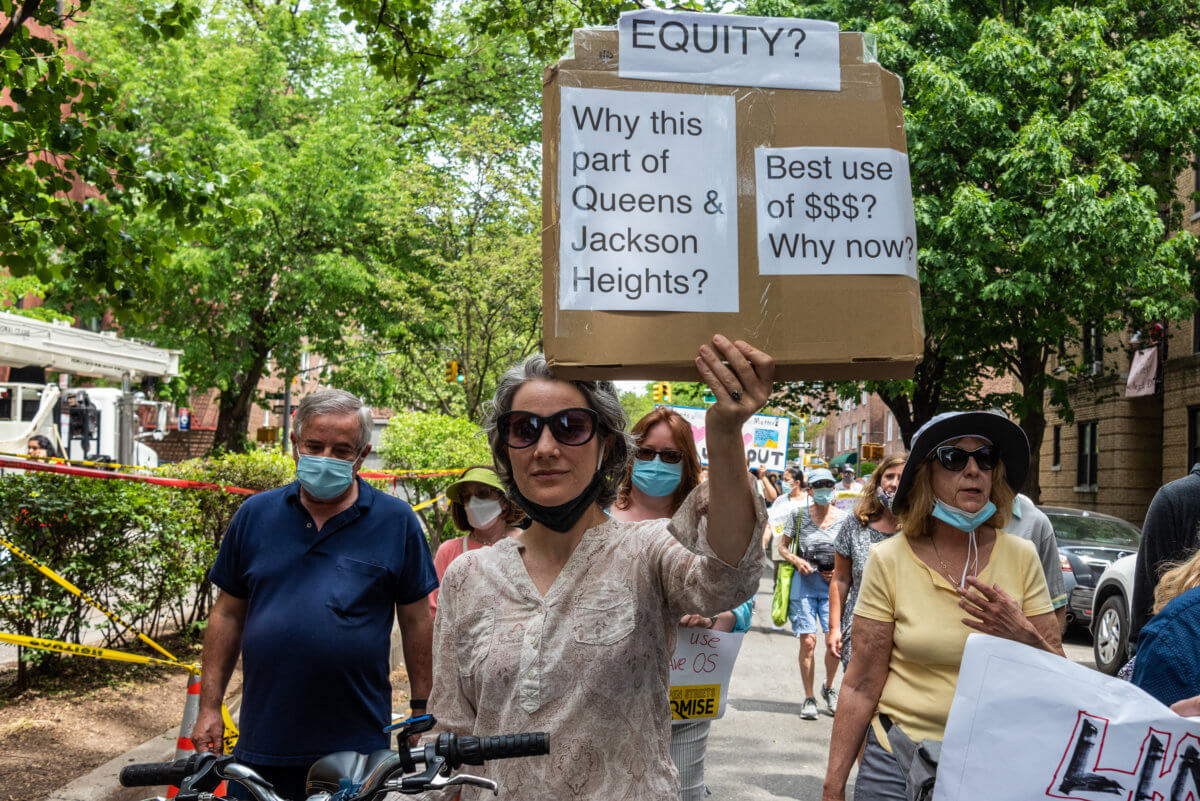
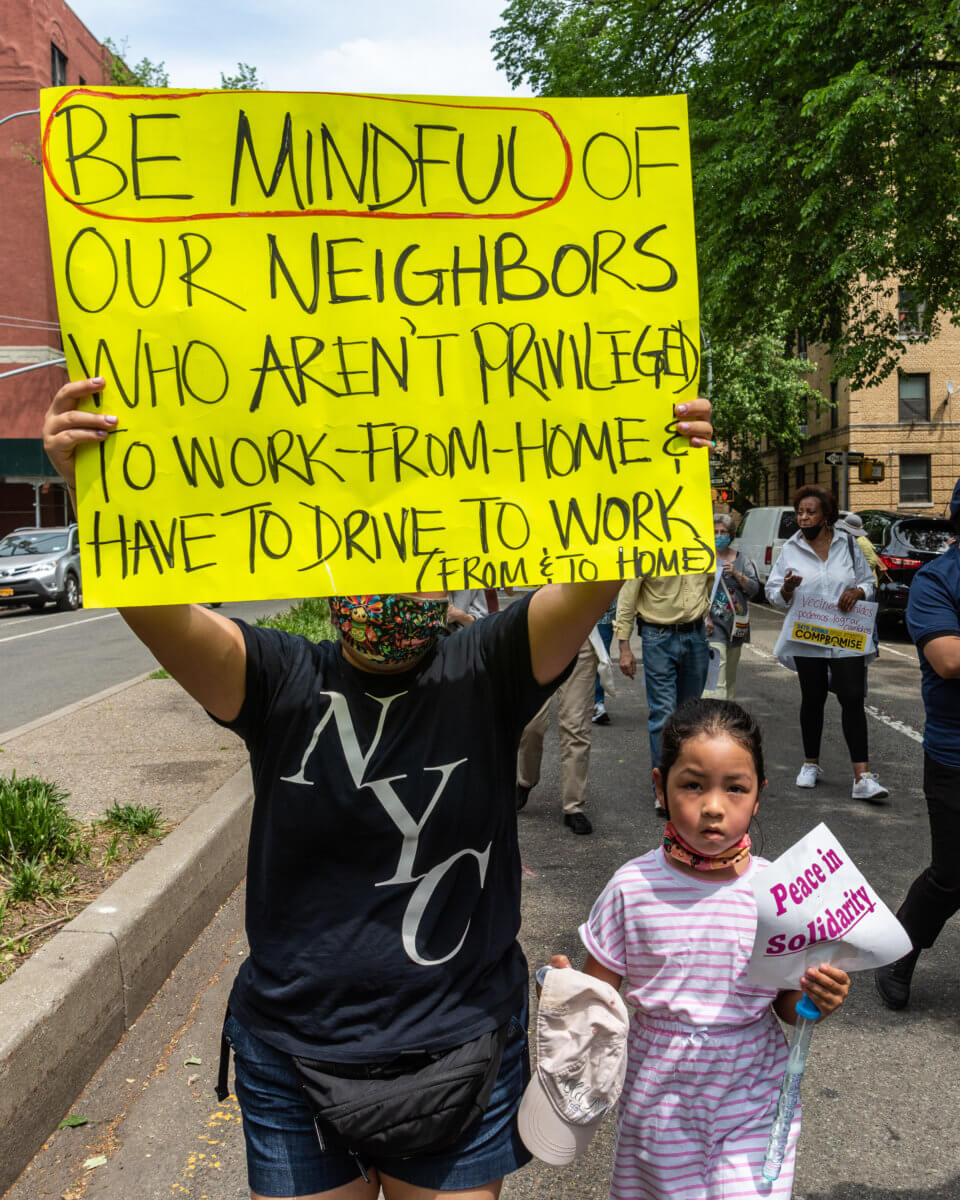
Cortes is concerned that once 34th Avenue is turned into a park, residents will have to deal with an influx of homeless people and drug addicts who have nowhere to go. He is also concerned about “unlicensed vendors.”
“We’re already starting to see a lot of vendors like you see on Junction Boulevard. If they want to have vendors, they should be able to put them in a specific area, you know, where maybe they have a flea market section, but not the entire avenue. It should be regulated,” Cortes said. “And right now, nobody’s talking to their shareholders, to the people who live here.”
Caroline Flores-Oyola, an organizer with 34th Avenue Compromise, was part of the contingency that had a meeting with González-Rojas on Friday.
Flores-Oyola appreciated that the assemblywoman took the time to meet with them but said she felt it “was a little bit of a, ‘Let’s listen to you because you say we don’t listen,’ kind of thing.”
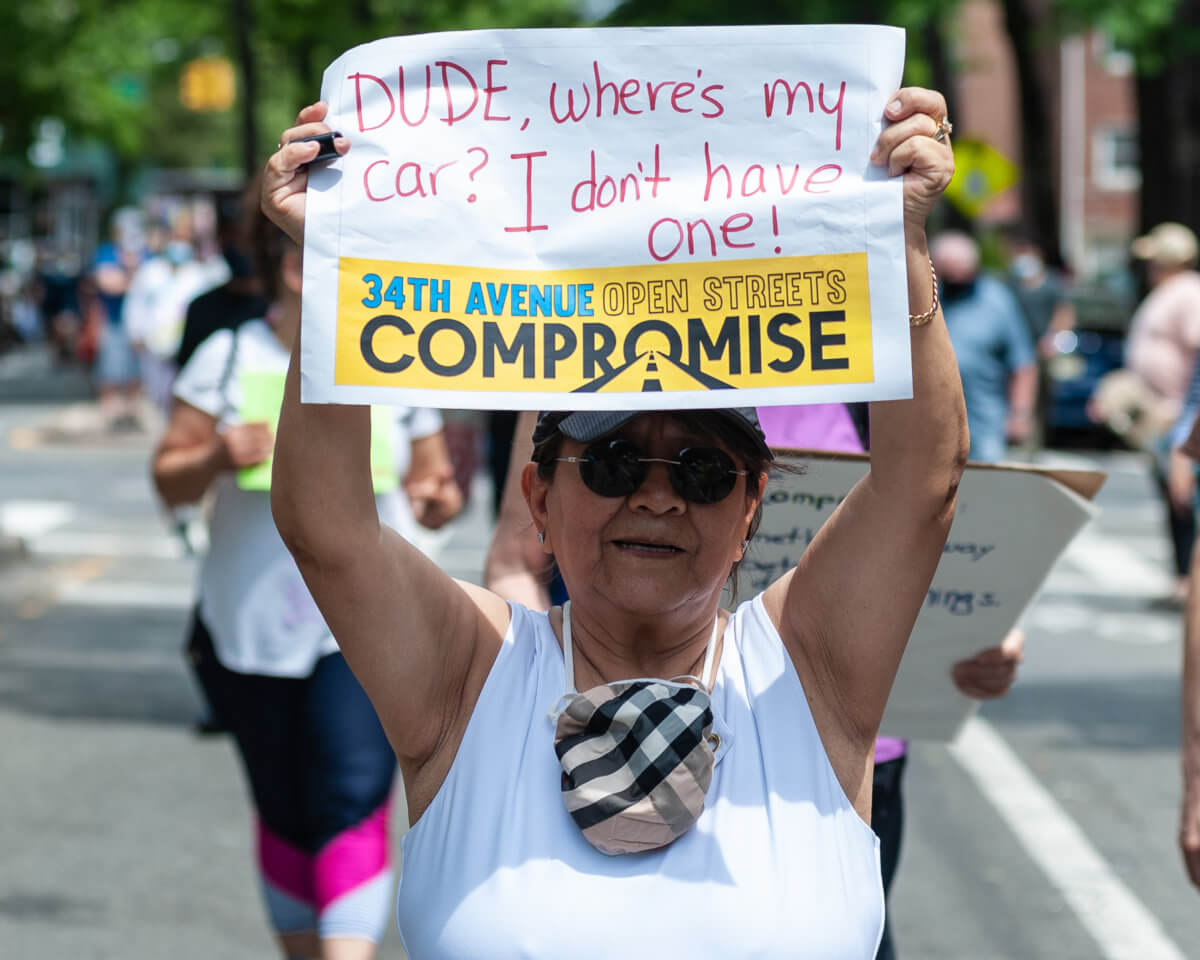
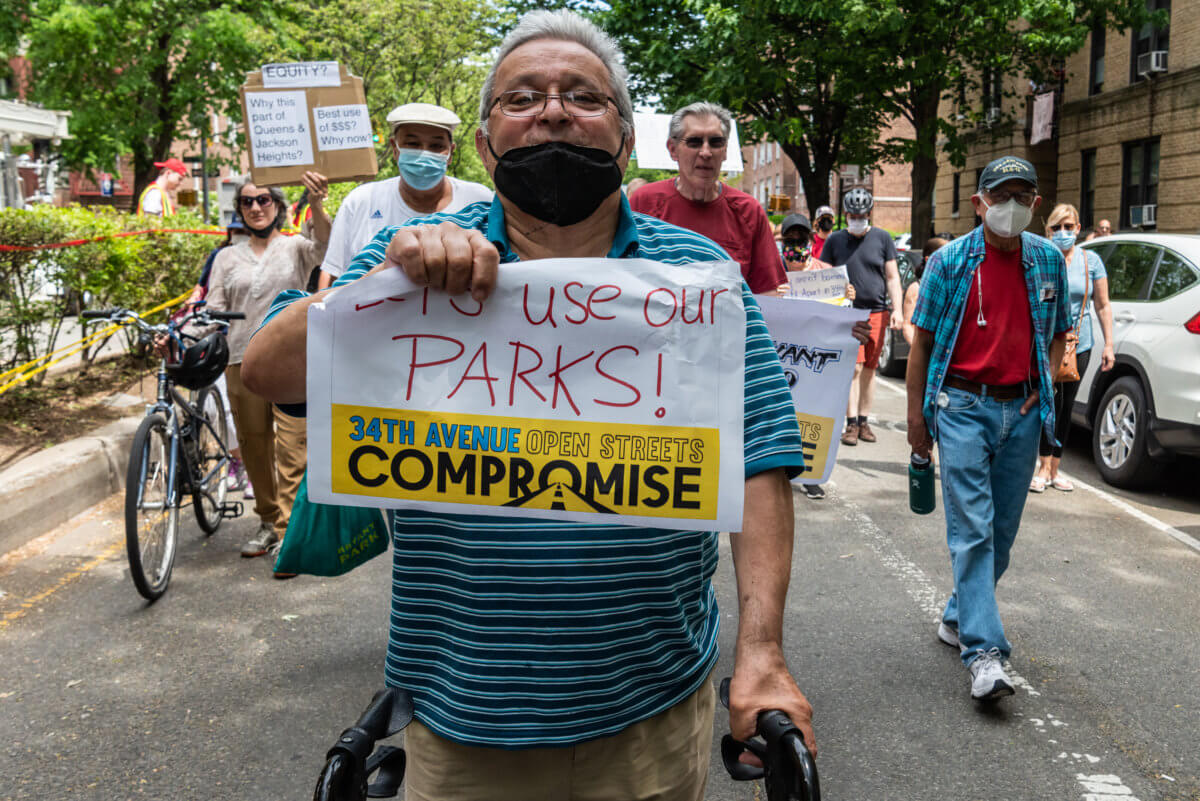
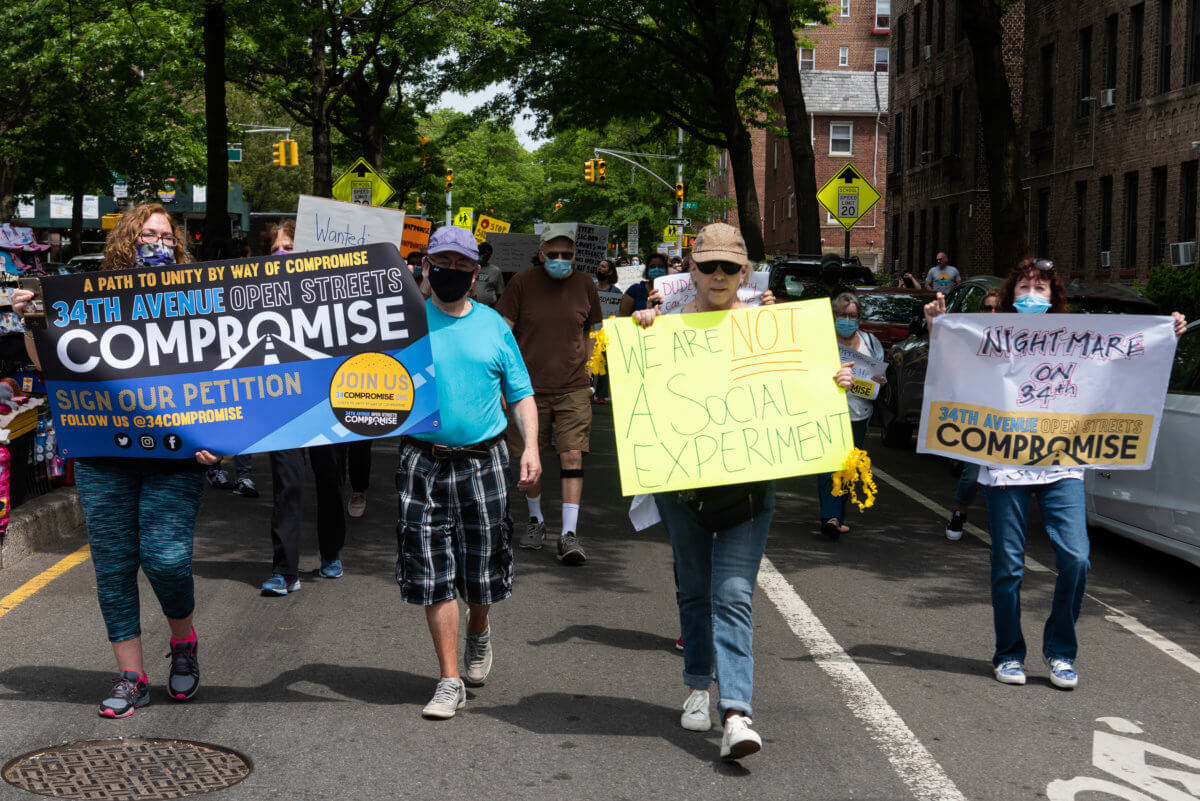
Flores-Oyola emphasized that she wants people to understand that her group — while against the linear park — is not “anti-Open Streets,” because everyone understands and appreciates the benefits of the initiative.
“A lot of our residents are elders. They’re seniors, and I just think that it’s absurd that a lot of these people who have bought their apartments, they are homeowners, have not been considered in this decision,” Flores-Oyola said. “So today, we’re walking for compromise to show that we do have numbers. We are not a minority.”
William Gorton, who shared that he doesn’t own a car and depends on public transportation, didn’t feel a linear park would benefit the neighborhood.
“I’ve been here 21 years. A park is normally a plus. We have a park as part of the building, which is a plus,” Gorton said. “A park, which is part of a street, is not a plus. That’s one of the big issues.”
Thirty-fourth Avenue Open Streets, often referenced as a model for what the program should look like citywide, has been a popular addition for many other residents and local elected officials in the area. Last fall, hundreds rallied to not only make the program permanent but extend it even more blocks, citing a lack of parks and open space in the area.
Community meetings to plan the 34th Avenue Open Streets program sponsored by DOT and local officials took place virtually in February and March, and are still ongoing.
Additional reporting by Angélica Acevedo

